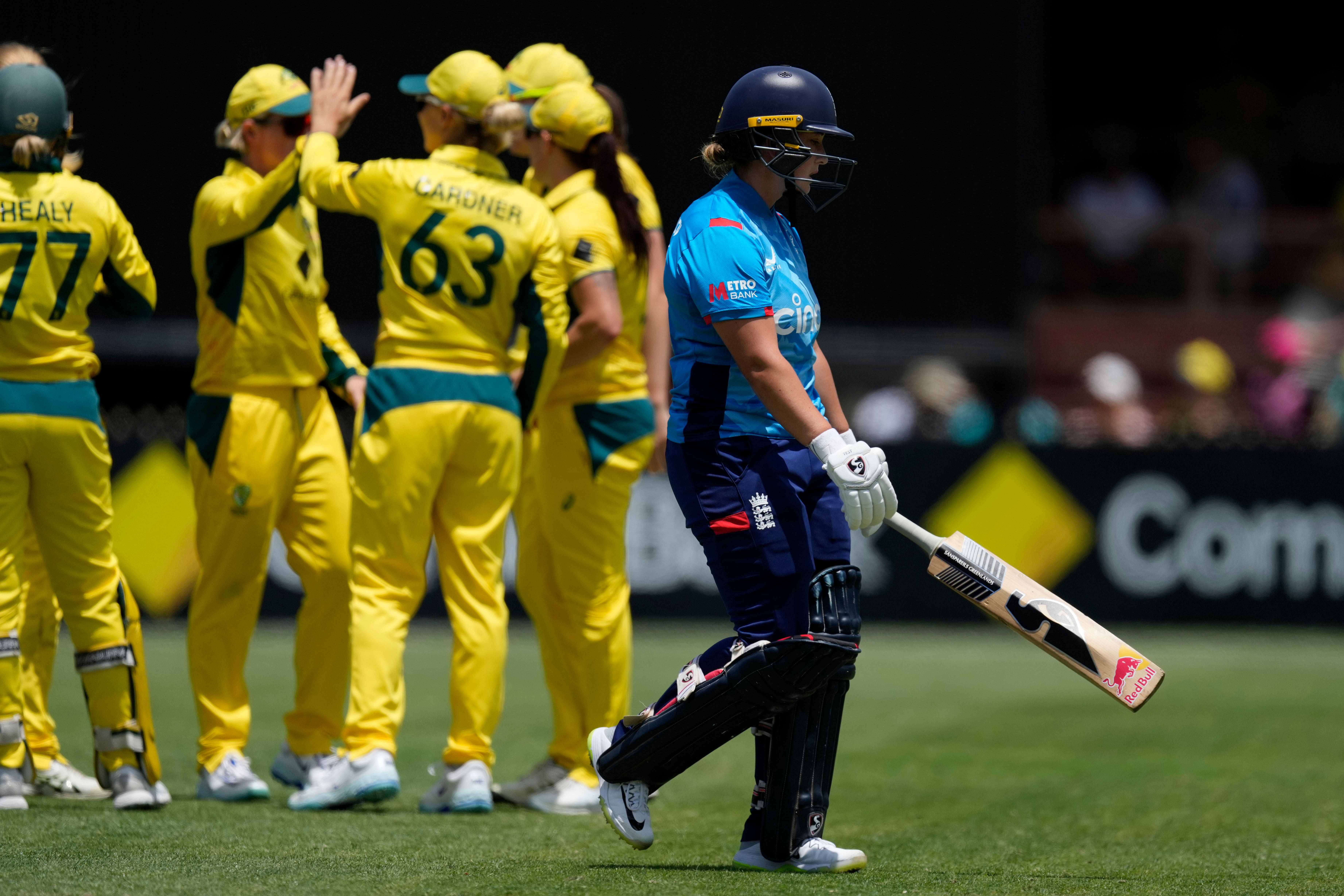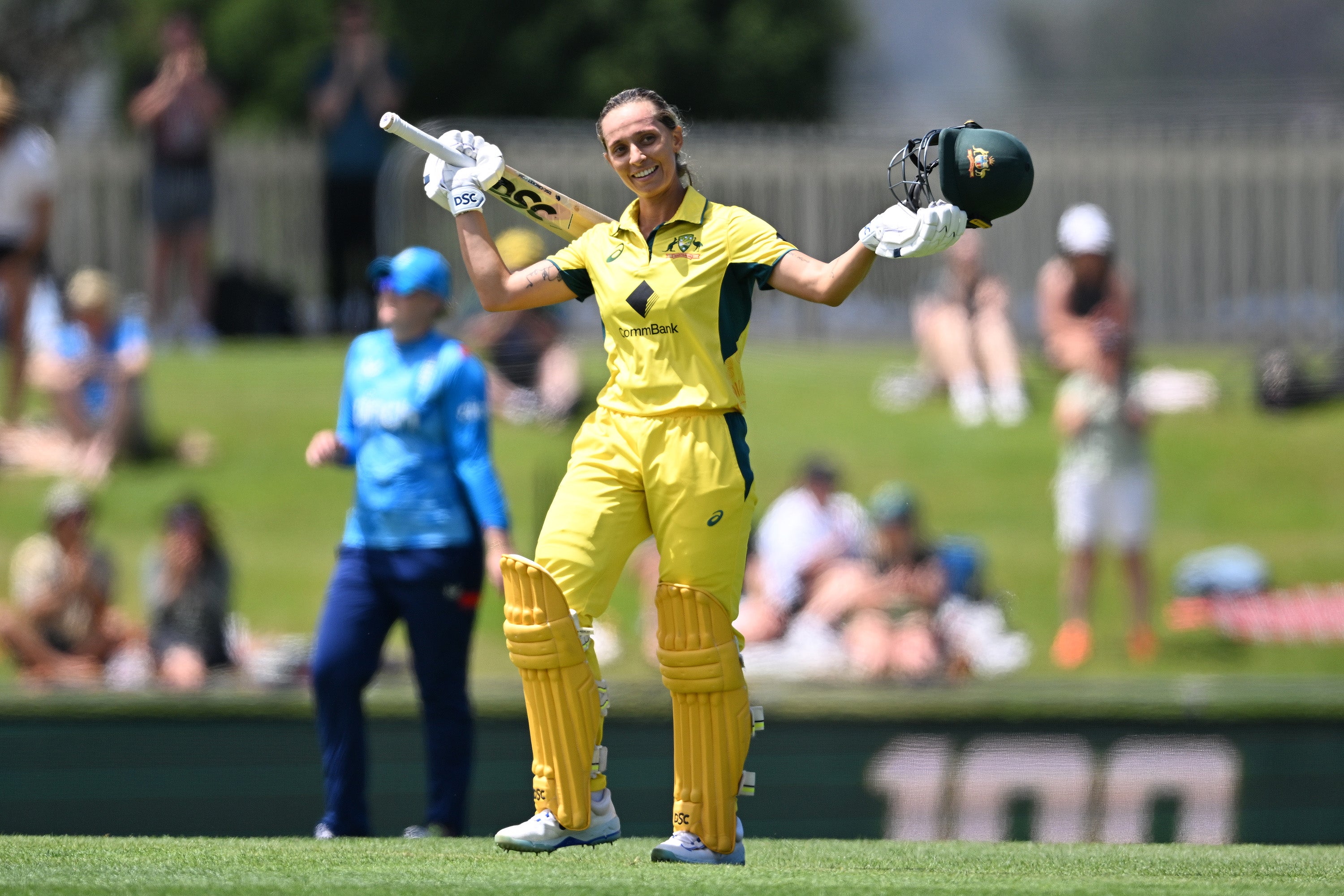The first game of an Ashes series has all those additional layers. Whether its extra media duties, singing the national anthem or the pre series photo with the trophy, the anticipation and build up is unavoidable for the players. When the England side took the field a week ago, seven matches lay ahead; seven opportunities to compete with Australia and win the Ashes.
England’s first outing was not the start they would have desired for their campaign, aiming to regain the Ashes after a barren decade. There were some positive signs from the camp at North Sydney Oval with Heather Knight and Danni Wyatt-Hodge getting some runs under their belt. Ending 204 all out however, was far from the competitive total they would have strived to set their rivals.
Lauren Bell put worries about the seam attack to bed with her economical bowling following the news that Kate Cross would be unable to play at least the first ODI as a result of the back spasm she suffered in South Africa in December.

Yet, Alyssa Healy led from the front, scoring 70 and taking the game away. Ash Gardner’s 42* set the tone for the rest of the series and continued the form she rediscovered at the end of the year. The four-wicket defeat caused sighs from England fans but there were still two more chances – surely England would find a win?
Junction Oval in Melbourne hosted the second ODI. With early nerves shaken off, it was England’s time to bounce back and go level with Australia. Of course, that is much easier said than done. England put Australia in to bat and between Sophie Ecclestone’s reliable spin and Heather Knight’s decision to bowl Alice Capsey, the visitors dismissed the Aussies for 180.
181 was a far less daunting total than one England are used to against Australia. Everything seemed to be falling into place for England but Australia have a gift: they can win from anywhere.
With the leg-spinning Alana King as their weapon of choice, the hosts chipped away at England’s batters. The dismissal of Nat Sciver-Brunt proved crucial, the pace of the game slowing down. A lapse in concentration from a nervy Amy Jones, failing to take a single, left Lauren Bell to pick up the pieces for England facing a fired up Megan Schutt. It was England’s game for the taking and they threw it away.
Moving to Hobart, the pressure was mounting on England. Mathematically, it was not a must-win game but realistically, it was. Trapping Australia 59-4 with the dangerous Phoebe Litchfield, Ellyse Perry, Alyssa Healy and Annabel Sutherland back in the dressing room, it was a perfect opportunity to get the game wrapped up quickly.

Instead, the Aussies’ immense depth was demonstrated as Ash Garder scored her maiden century, coming in at six, while Beth Mooney and Tahlia McGrath supported with half centuries. With 308 as Australia’s total, England would have had to have pulled off a record breaking innings – 309 still has never been chased successfully in women’s ODI cricket.
Australia are now 6-0 up in the multi-format Women’s Ashes series, securing all three ODI wins in Sydney, Melbourne and Hobart. The format allocates two points for a white ball win and four points for the Test match. If rain forces no result, then each team receives one point. Likewise, if the Test match ends in a draw, the teams are awarded two points.
Australia are the current holders of the Ashes, meaning England have to secure 10 points in order to win it back. Australia on the other hand just need eight points to retain. This means England must win all their remaining games to lift the trophy.
It puts immense pressure on England as there is no room for errors. It also means they must win the Test match at the MCG, a result that can be incredibly weather dependent when the game is only across four days.
However, in 2023 when England hosted the Ashes, this is the position they found themselves in. Australia were 6-0 after the Test match and the first T20 at Edgbaston. England had to win the remaining white ball games. They triumphed in four out of five matches, meaning Australia retained the Ashes but it was by fine margins. It’s not completely off the cards for England.

T20 is arguably England’s strongest format. The squad will look somewhat different to the ODI team with wicketkeeper Bess Heath, all-rounder Freya Kemp and spinner Linsey Smith back in the fold. Sarah Glenn, Sophia Dunkley and Dani Gibson, who were in the ODI squad but did not play, are all likely to carry out important roles for England with some rotation expected from Jon Lewis.
The Aussies play with the mentality that losing is not an option. England must now adopt the same mantra.




